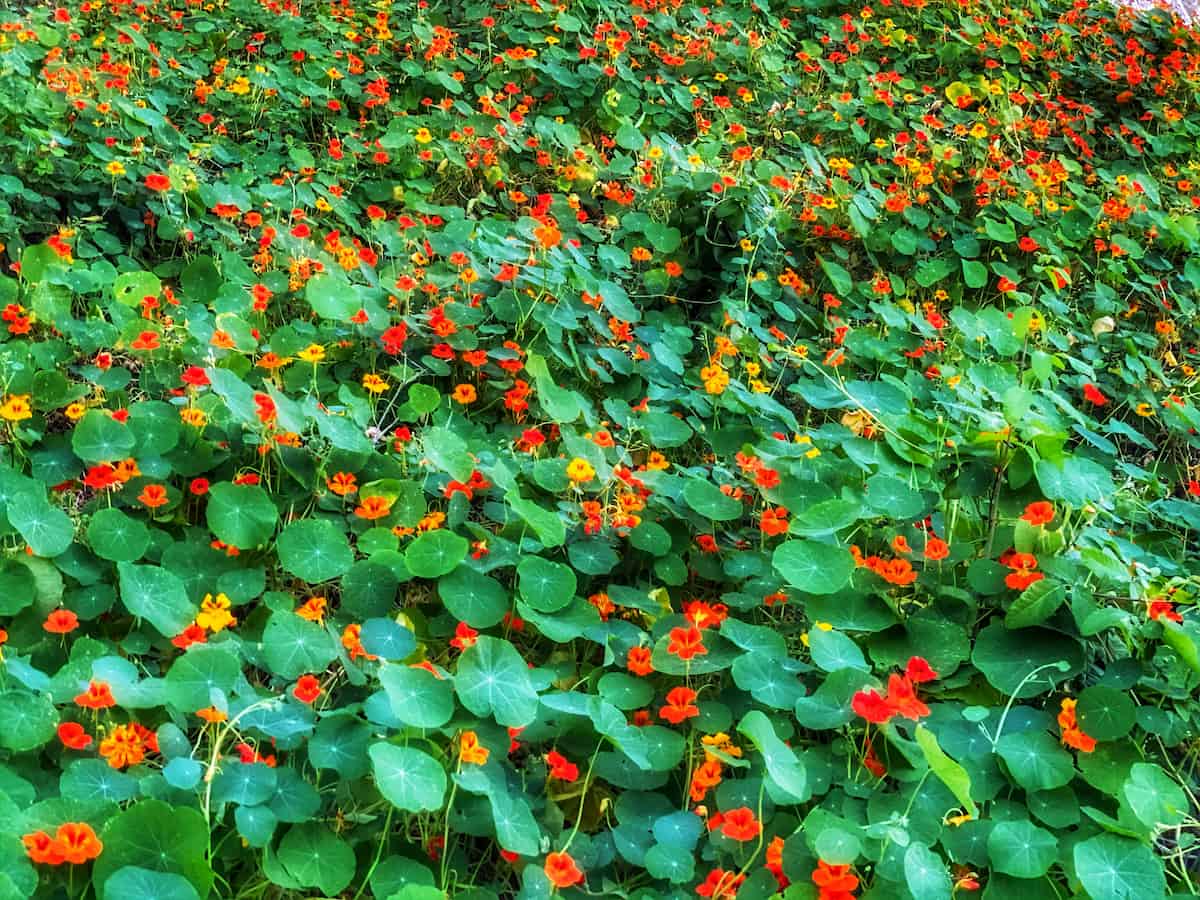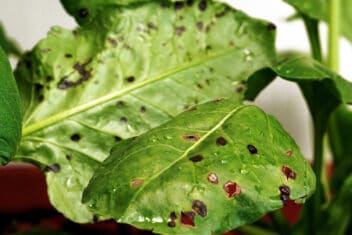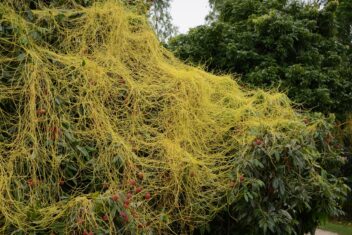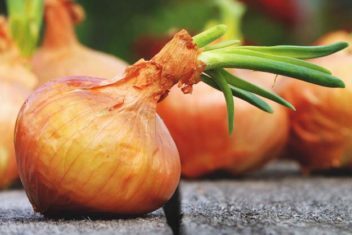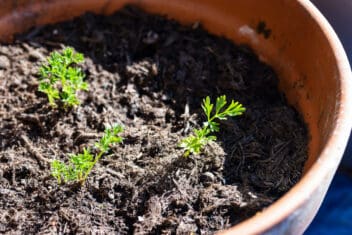I love perennials because you plant them once, and that space in the garden is taken care of years to come. Sometimes though, some perennials that seemed like a good idea at the time turn into a pain in the rear after they turn invasive and take over your garden.
Some of my favorite perennials became invasive and spread way more than I anticipated, so that they become a pest more than a pleasant addition to my garden.
If you want to know what ornamental perennials to think twice about before you plant them, let’s go.
What Are Perennials?
First, let’s define a perennial. A perennial plant is a plant that lives, spreads, and continues to grow for more than two years after planting.
While annuals are naturally limited by the fact that they die each year, perennials inclined to become invasive or overgrown have plenty of time to work their way underground or snake their way into other parts of the garden.
Perennials are handy in the garden because they save time and are a somewhat permanent fixture, while annuals provide quick but temporary cover and space-filling.
Perennials That Take Over Your Garden
This list is not encouraging you to avoid these plants. You just need to be aware that they will spread, often rapidly, and many are hard to get rid of. Consider where you will plant them and what is around them before you commit.
And remember: containers are your friend.
1. Nasturtium
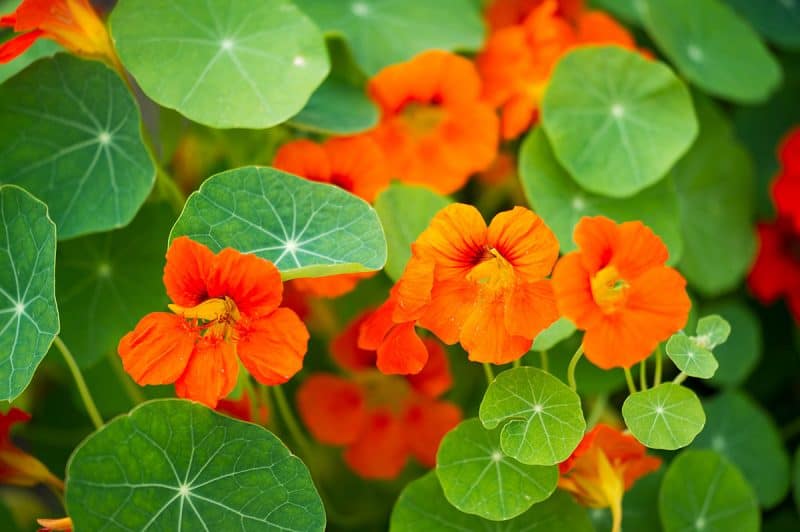
Nasturtium (Tropaeolum spp.) is often considered an annual that reseeds easily, but in warmer areas (USDA Growing Zones 9-11), it’s a neverending perennial that spreads and takes over entire gardens and landscapes.
Once you plant it, nasturtiums drop seeds constantly and grow new plants among the older plants. It spreads easily and swiftly.
Plant nasturtiums in containers to keep them contained, and don’t allow them to spread too far.
I have a very large bank covered in nasturtiums and have given up on getting rid of them completely. I just control it when necessary by cutting it back to limit its reach.
2. Bear’s Breeches
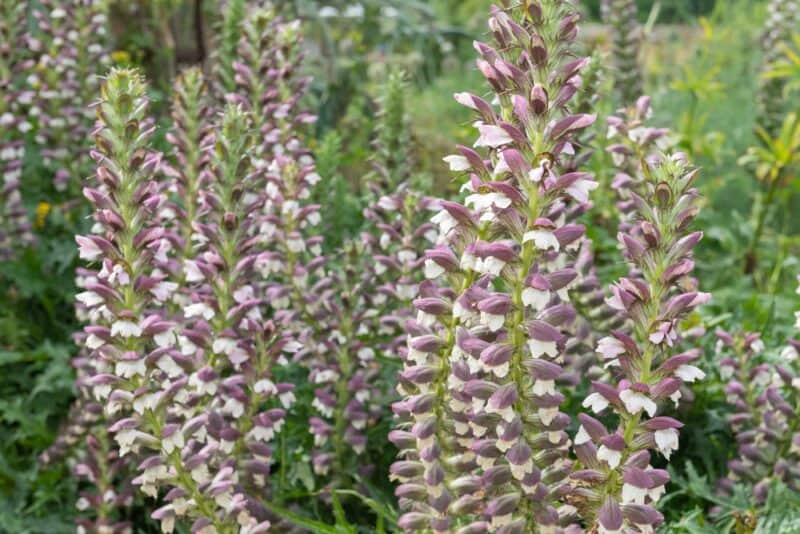
These herbaceous plants will form thick clumps that are near impossible to dig out completely. Although you give it three or four feet to grow in initially, it will soon expand outside this and take over areas used by other plants. It will also shade smaller plants.
Some areas list bear’s breeches (Acanthus mollis) as an invasive species.
The plant itself has large, glossy green leaves with tall, elegant flowers that spike upwards, but you have to ask yourself if that’s enough to cancel out the invasive habit.
3. Agapanthus
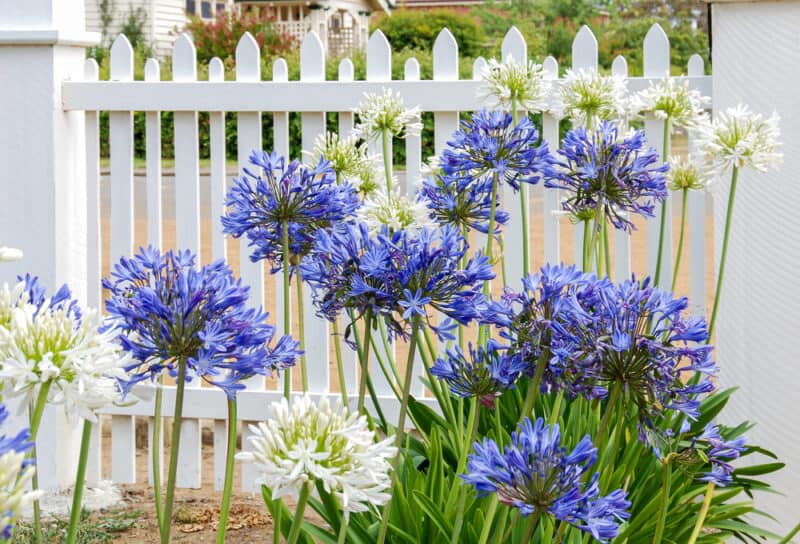
Often planted as a border plant or as a space filler, agapanthus (Agapanthus africanus) will form deep clumps. It seeds itself readily and is difficult to get out once established.
Rhizome roots quickly spread under the ground, and once this happens, the plant pops up relentlessly. It will cover an area of the garden within a few seasons.
There are a few hybrid agapanthuses that suit being grown in containers or inside if you just must have this plant in your life.
4. Lamium
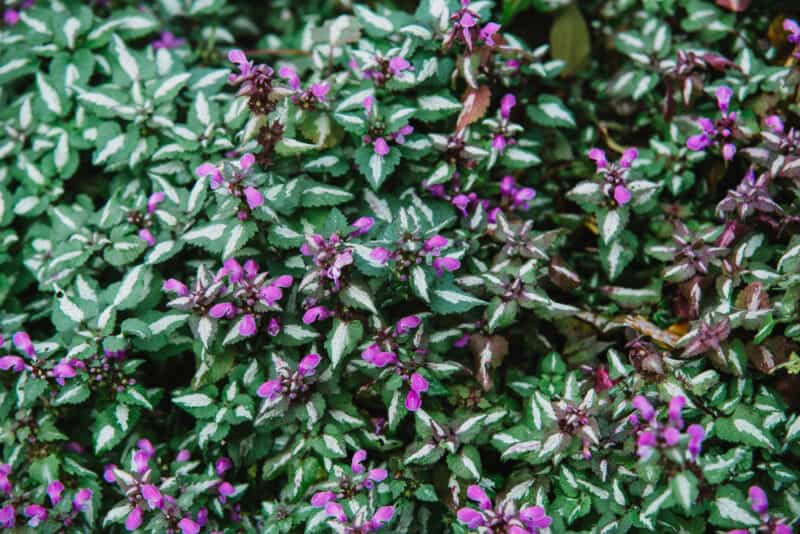
Lamium (Lamium maculatum) is an effective ground cover. It forms a thick carpet of foliage that even some weeds can’t penetrate. This is all well and good until about five years into its growth, and you may find it crept its way into other areas by quite a lot. Keep an eye on it.
5. Mint
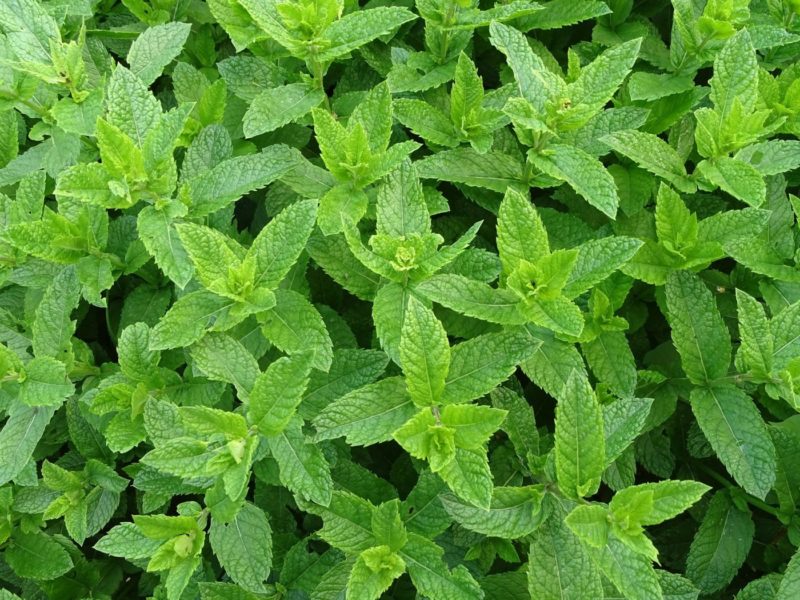
Of all the perennials on this list, mint (Mentha spp.) is well-known for its invasive potential. That small area you planted in your vegetable garden for mint tea and mint sauce will spread to multiple areas of the garden.
Mint spreads underground and will pop up in cracks of concrete, in garden beds, and through gaps in decking.
It’s best to plant mint in pots, either buried in the garden or sitting on top. If you plant mint in a submerged pot, ensure it’s not cracked. Mint spreads so easily that it will escape through a crack.
6. Japanese Anemone
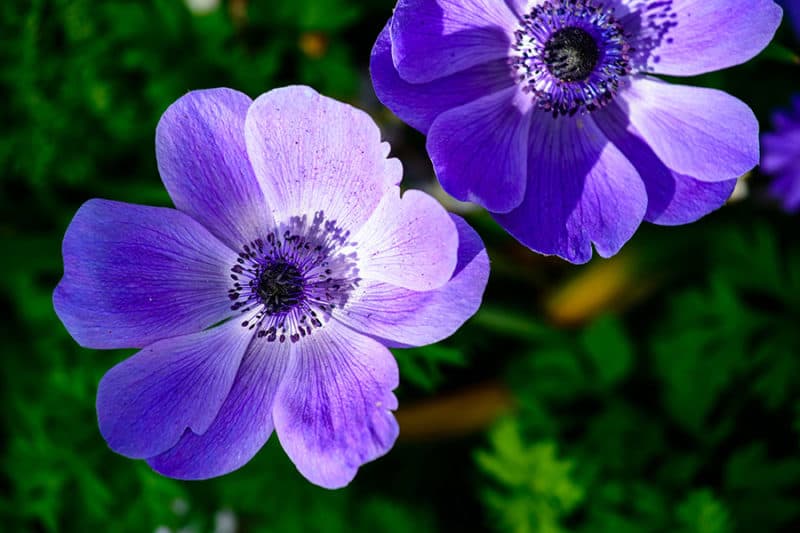
Don’t be fooled by the delicate appearance of this plant above the soil. Underneath, it spreads rapidly and is hard to control once it starts to spread.
They have fibrous roots that are difficult to dig up completely. It’s best to plant Japanese anemones (Anemone hupehensis) where they are okay to spread, or in containers to control them.
7. Wisteria
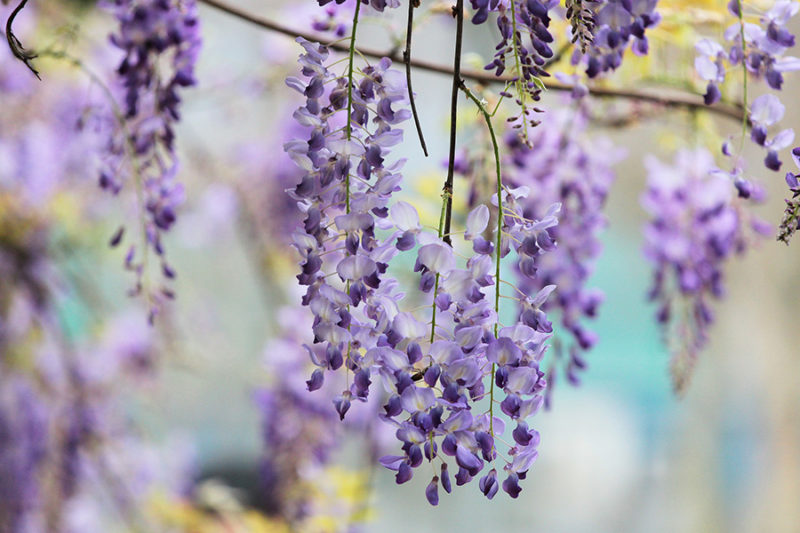
Wisteria (Wisteria spp.) is a woody climber native to China. It evokes images of cottage gardens or lush English country manors. It’s also an aggressive perennial that spreads and grips onto anything. Wisteria can damage your house or any other structure it grows on.
If wisteria twines itself around a tree, it will eventually kill it.
Wisteria can get so heavy it will topple a trellis that is old or has a weak spot. It’s considered invasive in some states but is also available for purchase in many locations.
8. Tansy
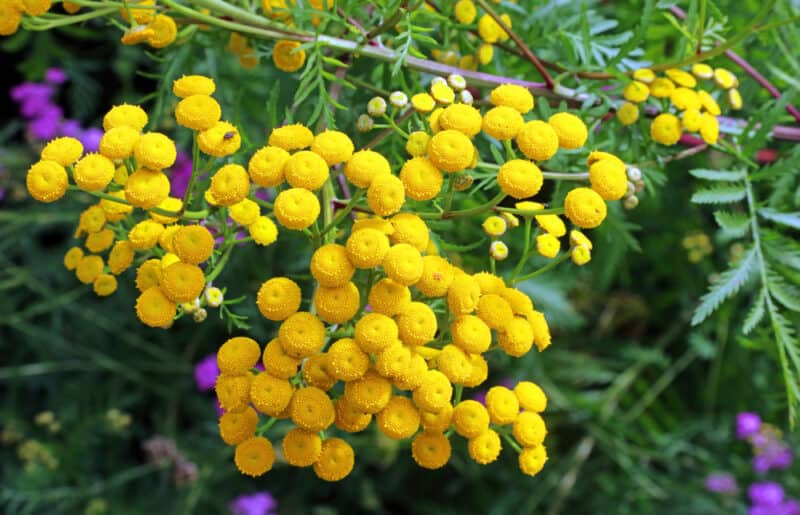
Tansy (Tanacetum vulgare) is often used as a companion plant because of its ability to repel pests with its scent. It’s a perennial herbaceous plant said to be good for luring bees to the garden.
Tansy will spread by growing big, encroaching on other plants, paths, and lawns.
9. Obedient Plant
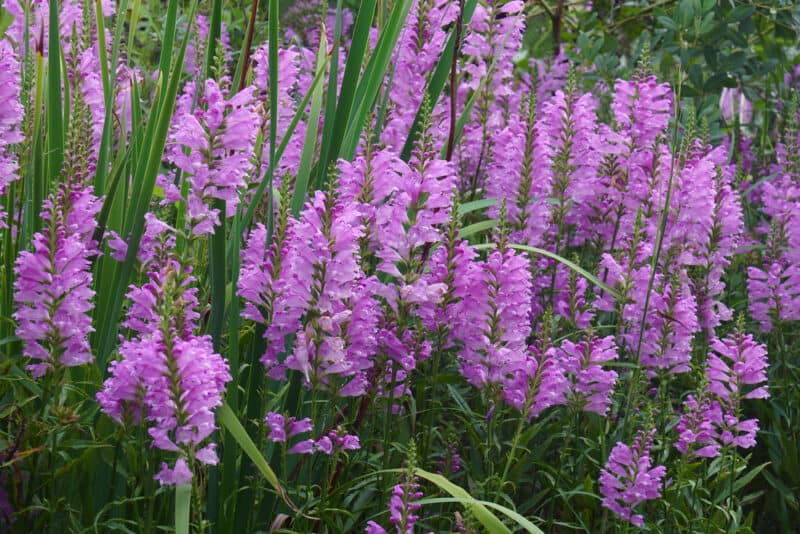
This is the only plant I know of where you can bend the stems to face the direction you want. This novelty is why many gardeners try it. This clump-forming perennial will spread very quickly through underground rhizomes.
It will spread and take over nearby plants, go under fences, and into other neighboring areas.
If you want to try an obedient plant (Physostegia virginiana), purchase the ‘Miss Manners‘ cultivar because it will remain in a tight clump and stay in its own area.
10. Lamb’s Ear
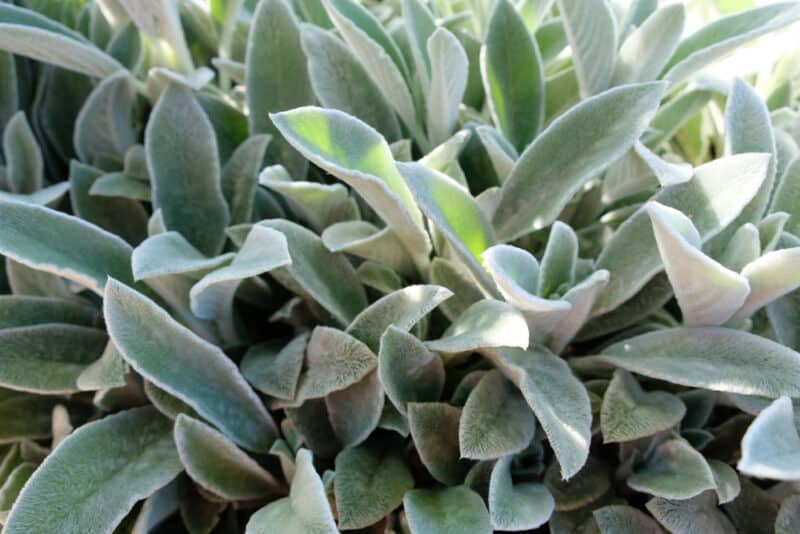
Used by many gardeners because it is a low-growing spreading perennial, lambs ear (Stachys byzantina) not only spreads into lawns and other parts of the garden, it also starts to look a little tatty when it is a few seasons in.
While it’s one of the loveliest perennials for a time, its invasive characteristics mean that there are better options out there.
11. Bishop’s Weed/Snow On The Mountain
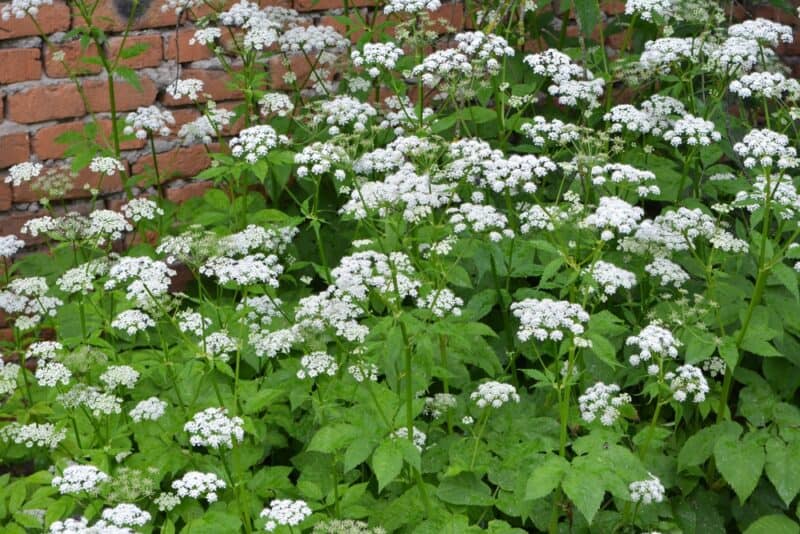
The variegated leaves of bishop’s weed (Aegopodium podagraria) make it an attractive ground cover. It doesn’t take long before those leaves cover just about everything in their path.
It is also hard to eradicate it if you decide you don’t want it anymore, or you’re tired of trying to keep it in check.
Bishop’s weed spreads by underground rhizomes, so if you leave a little in the soil, it will regrow quickly. It will take you a number of seasons to get out of your garden.
12. Ostrich Fern
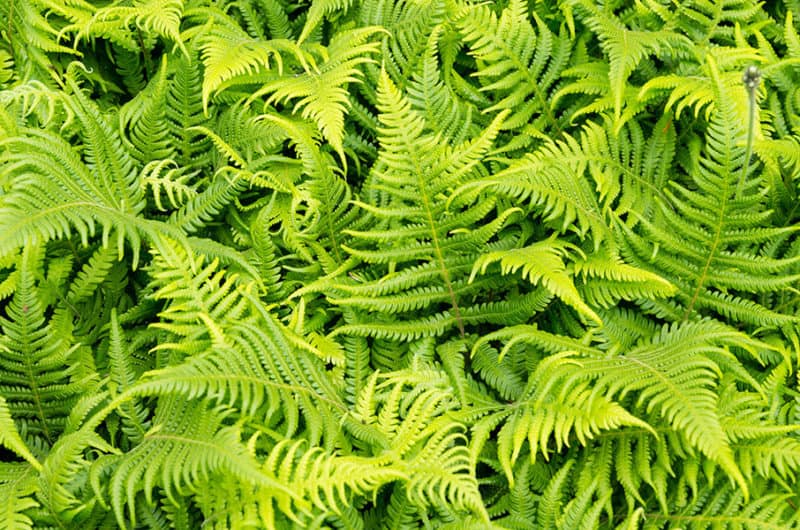
Ostrich ferns (Matteuccia struthiopteris) are hardy perennials in many places, but they’re also invasive. Although they look wonderful, ostrich ferns will take over your garden. Plant them in a cool or damp wooded area where other plants struggle.
In the garden, ostrich ferns will overtake the area by spreading through underground rhizomes.
13. Creeping Bellflower
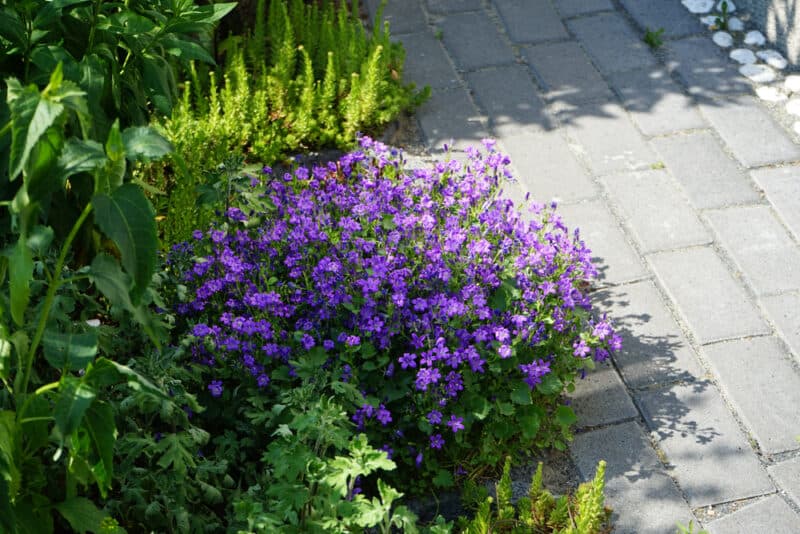
This hardy perennial is considered a noxious, invasive weed in many areas, but it’s often found in flower and perennial gardens. It spreads easily and is difficult to get rid of.
Creeping bellflower (Campanula elegans) has a long taproot that snaps off the moment you try to pull the plant out. It will then sit there quietly growing underground before pushing its way to the surface and spreading swiftly again.
If someone offers you a free creeping bellflower, politely decline.
14. Borage
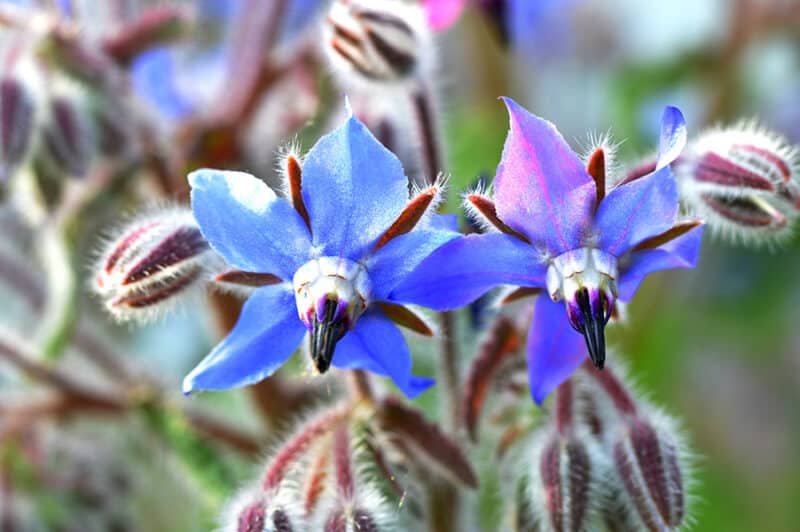
To some, borage (Borago officinalis) is an annual, but in warmer areas, it is a short-lived perennial. Although it spreads a bit where you plant it, borage pops up all over the place.
Borage is easily pulled out when the seedlings are young, but as the plant ages, it tends to snap off when pulled.
If you want fuss-free gardening and don’t want to chase your tail pulling out prolific spreading plants, borage is one to leave out of your planting plan.
15. Comfrey
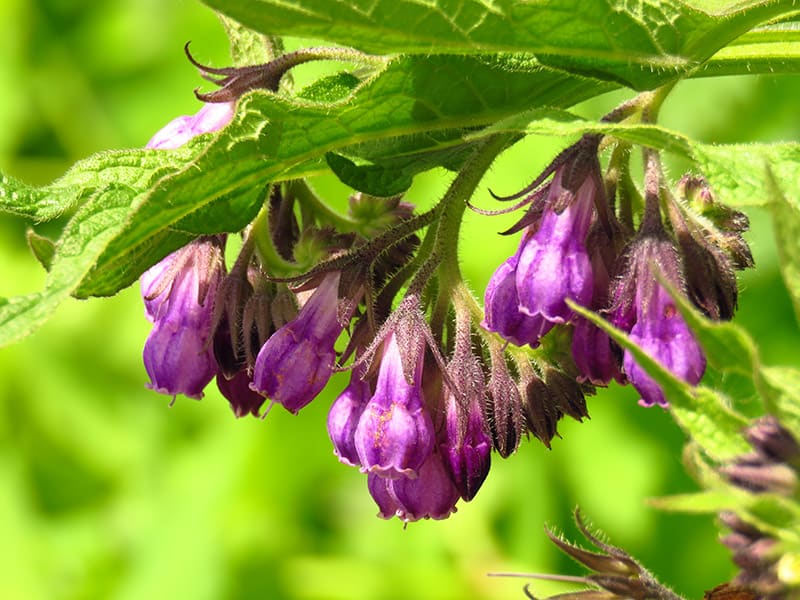
Comfrey (Symphytum officinale) will lull you into a false sense of security as it grows reasonably slowly to begin with. It dies back over winter and grows back twice the size the following year. Because it requires little maintenance, it spreads underground rapidly and pops up, taking you by surprise,
Comfrey is such a prolific grower that if you don’t dispose of it properly and throw the plants down a bank as I did, it will give you a whole new comfrey patch.
If you want comfrey, but don’t want the spread, plant it in a container.
5 Tips for Planting Perennials
- Take note of the size the perennial will get to and the likelihood of spreading and replicating.
- Consider your growing zone and environment. A plant that is invasive in one area may not be invasive in another.
- Plant perennials spread by rhizomes in an area of the garden that allows for the extra plants.
- If you want to remove a perennial that spreads by rhizomes, it may take two or three seasons to achieve that.
- If you have limited space, or don’t want the perennial to spread, plant in containers and ensure the roots don’t break through the bottom.
